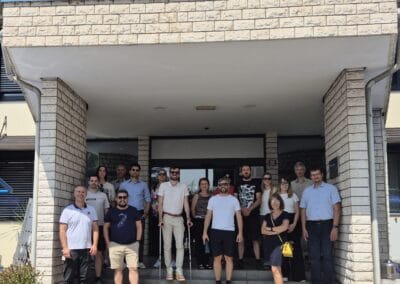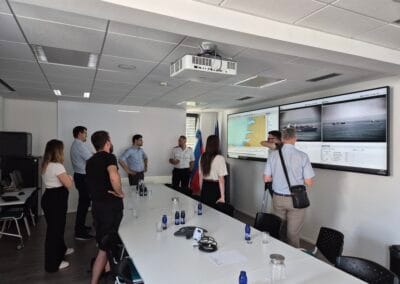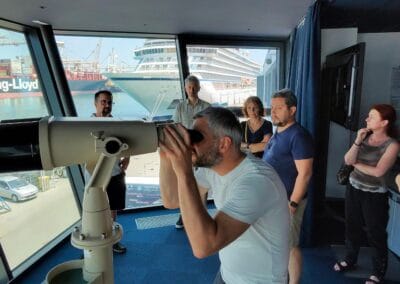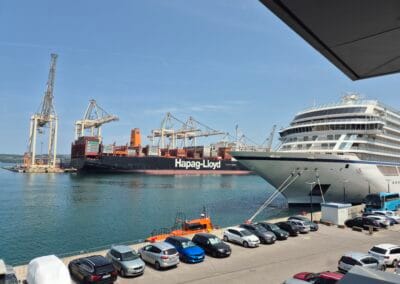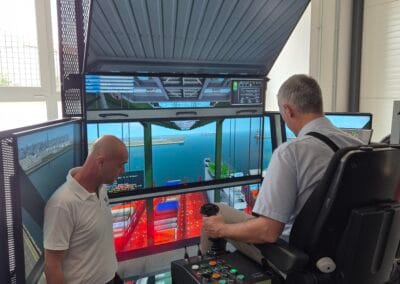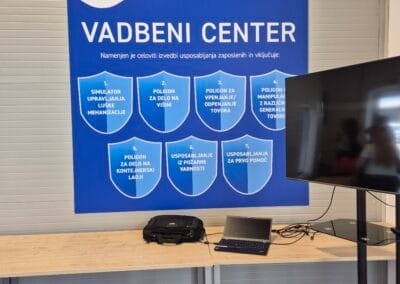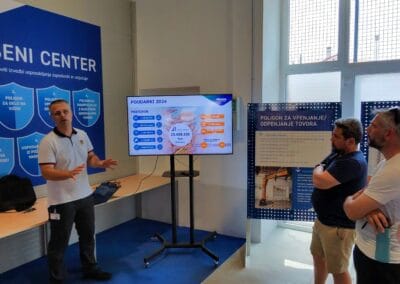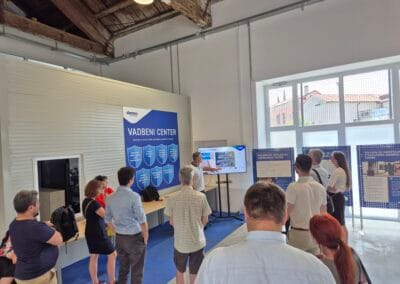On June 13, 2025, partners of the INNO2MARE project visited the Maritime Administration and Luka Koper, Slovenia’s largest and most strategic seaport, for an insightful exploration of the port’s operations, technological innovations, and strategic priorities in maritime innovation and sustainability.
The visit was organized by Mr. Mirnik, a member of the INNO2MARE Innovation Council, as a part of the project’s ongoing commitment to fostering cross-sector collaboration and enhancing understanding of port-related challenges and opportunities among diverse stakeholders.
During the visit, participants engaged in in-depth discussions on key topics highlighting the complexity and innovation of modern port environments. These included Navigation and Maritime Safety, Communication with External Stakeholders, Port Energy Supply and Sustainability, Remote Control Systems, and Simulation Tools.
The visit began at the Maritime Administration, where we explored the technologies and procedures that ensure the safe navigation of vessels entering and leaving the port. This included an overview of safety protocols, communication systems, and risk management practices essential to efficient and secure port operations.
Following this, a guided bus tour through the Port of Koper provided access to essential operational areas. The itinerary included a designated stop for thematic discussions led by Mr. Mirnik. Participants also visited the port’s training center, where they experienced hands-on demonstrations of the port operation simulator—covering scenarios such as working at height, cargo securing and releasing, and handling various cargo types in specialized polygons.
Mr. Mirnik further presented on digital communication tools, coordination protocols, and emerging trends in intermodal logistics. He highlighted Luka Koper’s initiatives to integrate sustainable energy solutions aimed at reducing the port’s carbon footprint and enhancing operational resilience.
The visit also shed light on the port’s interactions with external entities, including shipping companies, freight forwarders, customs authorities, law enforcement, and other infrastructure operators, emphasizing the collaborative ecosystem required for efficient port management.
This immersive experience offered valuable real-world insights into port operations while underscoring the critical role of collaboration between research institutions, industry stakeholders, and public authorities. As INNO2MARE continues to advance maritime innovation in Slovenia and Croatia, such site visits remain vital for aligning efforts towards a digitally advanced, safe, and sustainable maritime ecosystem.


